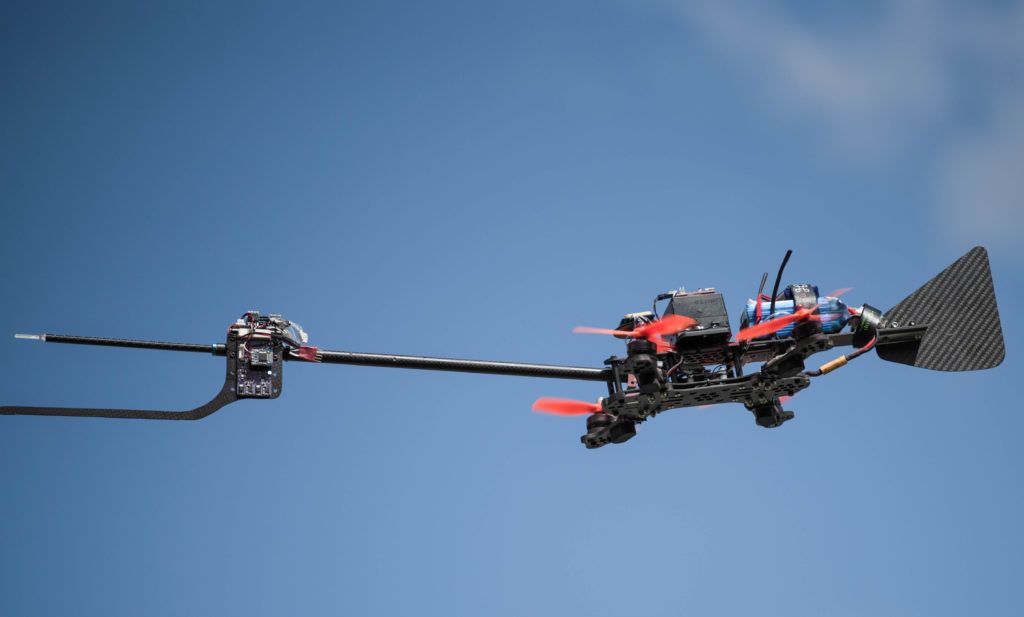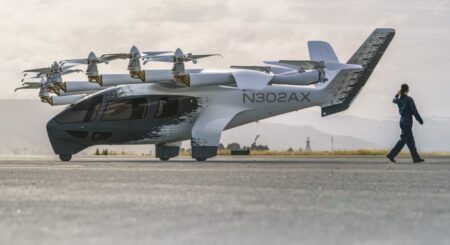Australian aerospace researchers have warned that regulation needs to be established that addresses the issue of sudden wind gusts affecting the flight of eVTOL aircraft in cities.
The study, Gusts Encountered by Flying Vehicles in Proximity to Buildings was recently published in the journal Drones and could help shape the regulation of vertiports, flight paths and air taxi requirements in Australia and around theworld.
As part of the study, RMIT University’s Uncrewed Aircraft Systems (UAS) Research Team in Melbourne, Australia measured how sudden wind gusts form around city buildings and destabilize aircraft.
Lead researcher and aerospace engineer, Dr Abdulghani Mohamed has studied wind gust dynamics for over a decade and said that this aspect needs to be adequately addressed by regulation in Australia and overseas before we fill our city skies with air taxis and other drones.
Strong wind gusts from around city buildings
Low-flying aircraft are at risk from wind gusts because they land and take off at low speed, explained Mohamed, with the RMIT research revealing sudden wind gusts can pose significant safety challenges for air taxis and drones in under a second.
As a result, air taxis and drones will need more power for landing or taking off in cities compared with an airport or an open space, he explained.
“These aircraft need powerful motors that can rapidly change the thrust generated by the propellers to rapidly force the vehicle back on course, a process which requires more energy,” said Mohamed, from the School of Engineering.
Regulations for Advanced Air Mobility (AAM) aircraft, such as future air taxis, are being compiled around the world, including in the USA and Europe. The RMIT team said that weather frameworks are needed to ensure this new technology is safe and reliable, including site-specific wind simulations and measurements to identify hazardous regions.
“Regulations and certification need to specifically address safe operation when traversing building flow fields,” Mohamed said. “As we determine the location of vertiports we also need to determine hazardous regions to avoid. This will enhance safety and reduce interruption of a fleet due to wind conditions,” Mohamed said.
“In Australia, it is not clear yet whether this falls under CASA’s jurisdiction or the Bureau of Meteorology, however, air taxis will need to be provided with weather information at much higher resolution and faster rates than currently possible. This is important for flight planning.
“The margin of error will be much lower than at airports, where large aircraft can tolerate much stronger gusts. We won’t have that flexibility with air taxis in cities.”
Next steps
“Purpose-built vertiports mean we could integrate geometric design features to reduce hazardous flow conditions from occurring, and we are exploring this in our current research,” Mohamed said.
“Existing buildings can also be repurposed as vertiports but may require modifications to improve the aerodynamics near the landing pads. The effectiveness of such design features can be assessed through either scaled experiments in wind tunnels or full-scale measurements.
“Extensive wind flow mapping at full-scale will no longer be daunting in the future. We are continuing to develop our wind sensing drones – a swarm of drones instrumented with wind anemometers – to very accurately map around large infrastructure.”
The researchers are continuing research into wind gusts around buildings, with further exploration of different building shapes that may minimize adverse effects. They are also continuing to study the sensitivity of vehicles to gusts and turbulence, as well as flight-stability technologies.
This research was conducted in collaboration with the University of Maryland and Lehigh University and was funded by the US Airforce Office for Scientific Research and DSI Group.
Original story by Sarah Gates at RMIT





